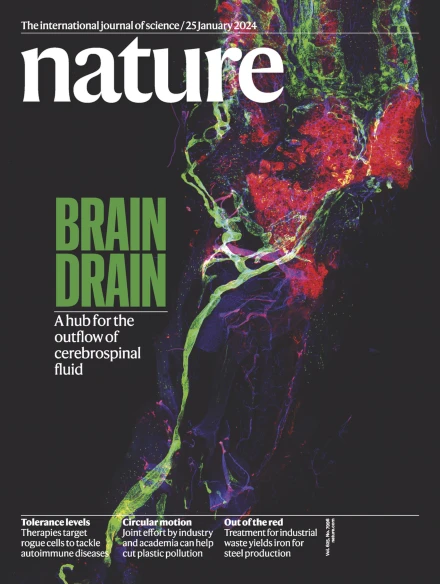IL-27诱导细胞毒性CD8+ T细胞程序加强肿瘤控制
IF 50.5
1区 综合性期刊
Q1 MULTIDISCIPLINARY SCIENCES
引用次数: 0
摘要
尽管细胞毒性CD8+ T淋巴细胞(ctl)对抗肿瘤免疫至关重要,但它们在肿瘤中经常功能失调1。维持CTL活性的细胞因子对癌症免疫治疗很有吸引力,但避免炎症毒性仍然是其临床应用的挑战2。本研究表明,在人类和小鼠肿瘤中,CTL特征的表达与il - 27表达密切相关。在小鼠中,IL-27直接作用于肿瘤特异性ctl,促进其在肿瘤微环境中的持久性和效应功能。此外,体内诱导IL-27过表达或半衰期延长的IL-27蛋白治疗耐受性良好,可诱导已建立的肿瘤消退,在抗肿瘤ctl中驱动增强的细胞毒性程序,并与PD-L1阻断协同作用。在接受抗pd -1/PD-L1治疗的癌症患者中,IL-27的高表达与良好的临床反应相关,IL-27在体外慢性抗原刺激过程中支持人CTL功能。我们的数据表明,内源性IL-27对抗肿瘤免疫至关重要,IL-27受体激动作用可以单独或联合PD-L1阻断安全地改善抗肿瘤T细胞反应。本文章由计算机程序翻译,如有差异,请以英文原文为准。


IL-27 elicits a cytotoxic CD8+ T cell program to enforce tumour control
Although cytotoxic CD8+ T lymphocytes (CTLs) are essential for anti-tumour immunity, they are frequently dysfunctional in tumours1. Cytokines that sustain CTL activity are attractive for cancer immunotherapy, but avoiding inflammatory toxicity remains a challenge for their clinical use2. Here we show that expression of a CTL signature is strongly associated with IL27 expression in human and mouse tumours. In mice, IL-27 acts directly on tumour-specific CTLs to promote their persistence and effector function in the tumour microenvironment. Moreover, treatment with inducible IL-27 overexpression or a half-life-extended IL-27 protein in vivo is well tolerated, induces regression of established tumours, drives an enhanced cytotoxic program in anti-tumour CTLs and synergizes with PD-L1 blockade. In patients with cancer who were treated with anti-PD-1/PD-L1 therapy, high expression of IL-27 correlates with a favourable clinical response, and IL-27 supports human CTL function during chronic antigen stimulation ex vivo. Our data demonstrate that endogenous IL-27 is essential for anti-tumour immunity and that IL-27 receptor agonism can safely improve anti-tumour T cell responses alone or in combination with PD-L1 blockade. IL-27 promotes tumour control by preventing dysfunction and enhancing cytotoxicity of tumour-specific CD8+ T cells.
求助全文
通过发布文献求助,成功后即可免费获取论文全文。
去求助
来源期刊

Nature
综合性期刊-综合性期刊
CiteScore
90.00
自引率
1.20%
发文量
3652
审稿时长
3 months
期刊介绍:
Nature is a prestigious international journal that publishes peer-reviewed research in various scientific and technological fields. The selection of articles is based on criteria such as originality, importance, interdisciplinary relevance, timeliness, accessibility, elegance, and surprising conclusions. In addition to showcasing significant scientific advances, Nature delivers rapid, authoritative, insightful news, and interpretation of current and upcoming trends impacting science, scientists, and the broader public. The journal serves a dual purpose: firstly, to promptly share noteworthy scientific advances and foster discussions among scientists, and secondly, to ensure the swift dissemination of scientific results globally, emphasizing their significance for knowledge, culture, and daily life.
 求助内容:
求助内容: 应助结果提醒方式:
应助结果提醒方式:


